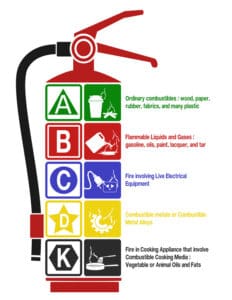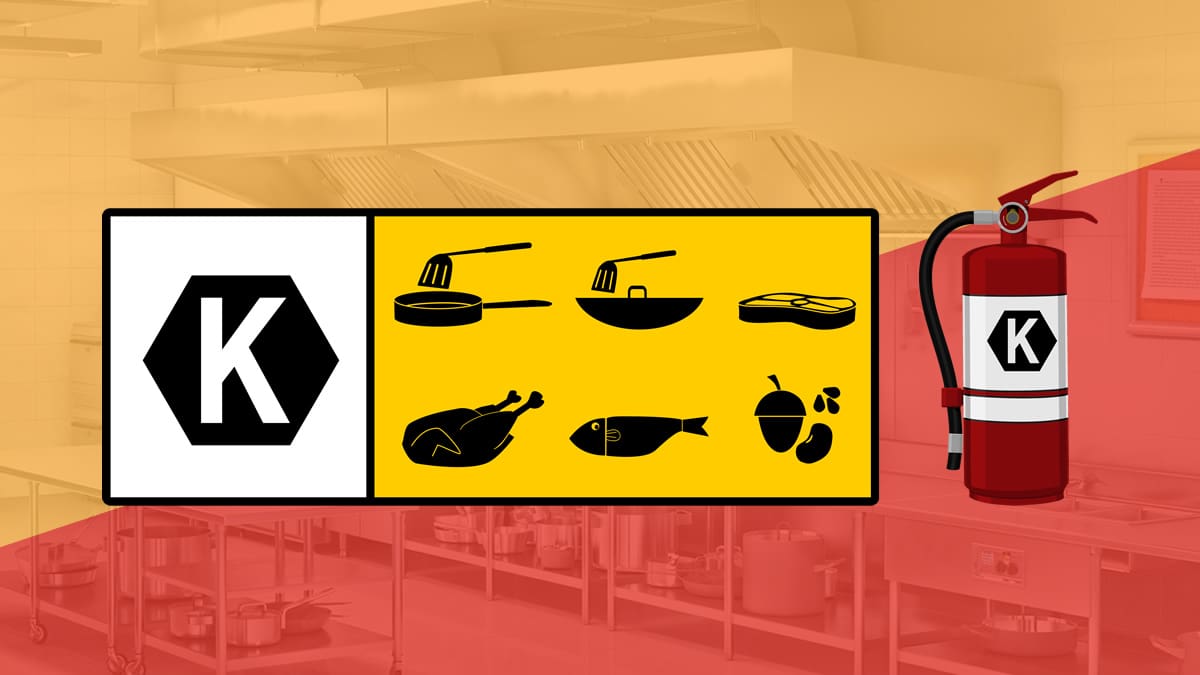What is a Class K Fire Extinguisher?
What is Saponification?
What Types of Extinguishers are Rated as Class K Fire Extinguishers?
How to Improve Workplace Safety with Class K Fire Extinguishers?
OSHA requires commercial properties and employers to choose and distribute fire extinguishers depending on the classes of expected workplace fires. The size and degree of the hazard should also be considered when selecting a fire extinguisher.
The following are some ways to improve workplace safety with a Class K fire extinguisher:
Location
Unlike the other classes of fire extinguishers, there is no distance requirement for Class K extinguishers. According to the OSHA requirements, the extinguisher to be located at the point of anticipated cooking for ignition. However, some local requirements may be stricter, and employers should check and be familiar with their local marshal and insurance agent. In general, extinguishers in a commercial kitchen should be located as follows:
- Extinguishers should be conspicuously located and immediately available in case of fire.
- Ideal locations to place them include on hanger, cabinets, or wall recesses.
- Height requirements will depend on the weight. If it weighs less than 40 pounds, its height should not be more than 5 feet above the ground. If its weight is more than 40 pounds, it should be placed no more than 3.5 feet above the ground.
Training
For the Class K fire extinguisher to be effective during emergencies, employers should provide a suitable educational program to equip employees on the fire extinguisher’s principles and use. Ideally, OSHA recommends that the training be done during the initial hiring and once a year after that. Most types of extinguishers operate using the PASS technique:
- P- break the tamper seal by pulling the pin on the extinguisher
- A-Aim it low with the nozzle pointed at the bottom base of the fire
- S-squeeze the handle firmly to release the extinguishing agent
- S- sweep the nozzle from side to side while firmly pointing at the base of the fire until it is completely extinguished.
Repeat the last three steps if the fire reignites.
Inspections
Portable fire extinguishers should be visually inspected each month. The inspection seeks to determine the following.
- If the extinguisher is appropriately located in its assigned place
- If the fire extinguishers are conspicuous and not blocked or hidden
- If the fire extinguishers are mounted following NFPA Standard No. 10 (Portable Fire Extinguishers.
- Whether the nozzles are free of any blockage and pin and seals are in place if the fire extinguisher reveal signs of abuse or damage
- Whether the pressure gauges show ideal pressure levels.
Maintenance and testing
Can I Use a Class K Fire Extinguisher to Fight a class A Fire?

Do You Have a Suitable Fire Extinguisher?
Fires are more likely to occur in restaurants than other types of businesses. The suitable fire extinguisher should protect your kitchen and workplace. WFX provides exceptional fire security solutions for both commercial and residential properties. Our experts will do both initial installation and routine maintenance to ensure your fire extinguishers and fire suppression systems provide adequate protection.
··· Give us a call today (855) WFX-1978 to learn what extinguishers and protection will be best for you »




